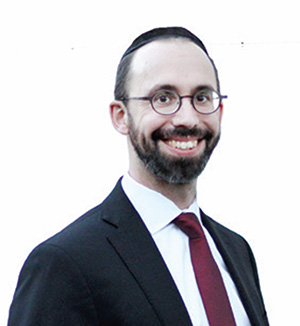
We’re nearly halfway through our trip—the journey of Sefirat Ha’Omer—the time period from Yetziat Mitzrayim until Kabbalat HaTorah. We have left Mitzrayim and are now en route to Har Sinai and from there to Eretz Yisrael, where we will arrive free from the depravity and decadence of Egypt. The Torah commands us (Vayikra 18:3), “Kma’aseh…”—Don’t practice the abominable behaviors of Mitzrayim where you lived and don’t practice the abominable behaviors of the inhabitants of Canaan to which I am taking you.
The Egyptians and the Canaanites were low, low people, and perhaps the most immoral in the world. I would have conjectured that perhaps they became better, somewhat more spiritual, when Bnei Yisrael arrived…yet the Midrash says just the opposite! The last generation of Egyptians was the lowest, and when Bnei Yisrael came to the Holy Land, the behavior of the Canaanites became even more despicable.
This troubled me very much. Everyone knows how people are influenced by the societies around them, so I understand why Hashem would allow these nations to behave this way when His holy people are elsewhere. But why should Hashem place us, the nation that He has commanded to be holy, in the most decadent societies on earth? This question is very relevant to our times, when all types of abhorrent lifestyles and human behaviors are becoming accepted, even embraced, by the nations.
Rav Chaim Friedlander, zt”l, explains with a fundamental concept from the Maharal: when polar opposites are forced together there are only two possible outcomes. They will either blend or remain totally distinct. I can give an example: When I lived in Eretz Yisrael they sold a drink called “Jump,” with a very unique pineapple-grapefruit flavor. I thought I understood: pineapple is extremely sweet, grapefruit is extremely sour…blend the two and enjoy the perfect balance. To my surprise, I fully tasted the extreme sweetness of the pineapple and at the same time the extreme sourness of the grapefruit—and they did not blend. In fact, each made the other jump out that much more distinctly!
Hashem has placed the Nation of Israel among people of extreme spiritual impurity, and we have only two options: blend, become desensitized to decadent behavior and become defiled, or separate and become even more refined and polished in our kedusha (holiness). This forced friction causes us to take action, increasing our levels of kedusha.
The very same result applies to a situation of impurity: it will either be lessened or intensified when it meets purity. This explains the rise in decadence of the Egyptians and the Canaanites when Bnei Yisrael came to their lands. Those people made their choices and did not abandon their ways; rather, they became even more entrenched in their decadent ways.
It is clear that Mitzrayim was a challenge to the character trait of kedusha. What made the Red Sea split for Bnei Yisrael? Our Sages tell us it was the merit of Yosef haTzadik. Of Yosef it says, “Vayanas” (he fled) from Potiphar’s wife, therefore “hayam ra’ah vayanas,“ the (Red) sea saw and drew away before the coffin of Yosef. Chazal say that klal Yisrael remained holy in the area of arayot (forbidden relations). We do not ask for these types of tests, but Hashem knows what we need. The onslaught of defilement in Mitzrayim in the area of morality was rejected by the holy people and it caused klal Yisrael to increase their level of kedusha in that area.
This same contrast of kedusha and tumah (defilement) is contained in the parshiyot we read during the Sefirat Ha’Omer period. Examine the core concepts threaded throughout these weeks: Vayikra-Tzav: Kedusha of a kohen and the korbanot (sacrifices). Tazria-Metzora: Tumah of tzara’at. Acharei Mot-Kedoshim: Kedusha of all klal Yisrael in their intimate relations and food. Emor: Kedusha of the Shabbos and holidays. Behar-Bechukotai: Kedusha of Shemittah and the kedusha of Eretz Yisrael.
As we assembled at the foot of Har Sinai, Hashem commanded Moshe Rabbeinu to tell us that “You will be a kingdom of priests and a holy nation.” To be Hashem’s nation we have to fulfill a mandate. We are required to meet higher standards of purity because we have a unique spark of Hashem in us (Yaakov Avinu’s face is depicted on one of the legs of the Divine throne!). “Kedoshim tihiyu ki kadosh Ani”—You shall be holy because I, Hashem, am holy. We have a responsibility to act in a more refined manner because we represent Hashem.
By Rabbi Baruch Bodenheim
Rabbi Baruch Bodenheim is the associate rosh yeshiva of Passaic Torah Institute (PTI)/Yeshiva Ner Boruch. PTI has attracted people from all over northern New Jersey, including Teaneck, Bergenfield, Paramus, Rockaway and Fair Lawn. He initiated and continues to lead a full multi-level gemara learning program in the evenings, gives halacha and hashkafah shiurim on Shabbat and, more recently, has spread out beyond PTI to begin a weekly Beit Medrash program with in-depth chavruta learning in both Livingston and Springfield, New Jersey.










